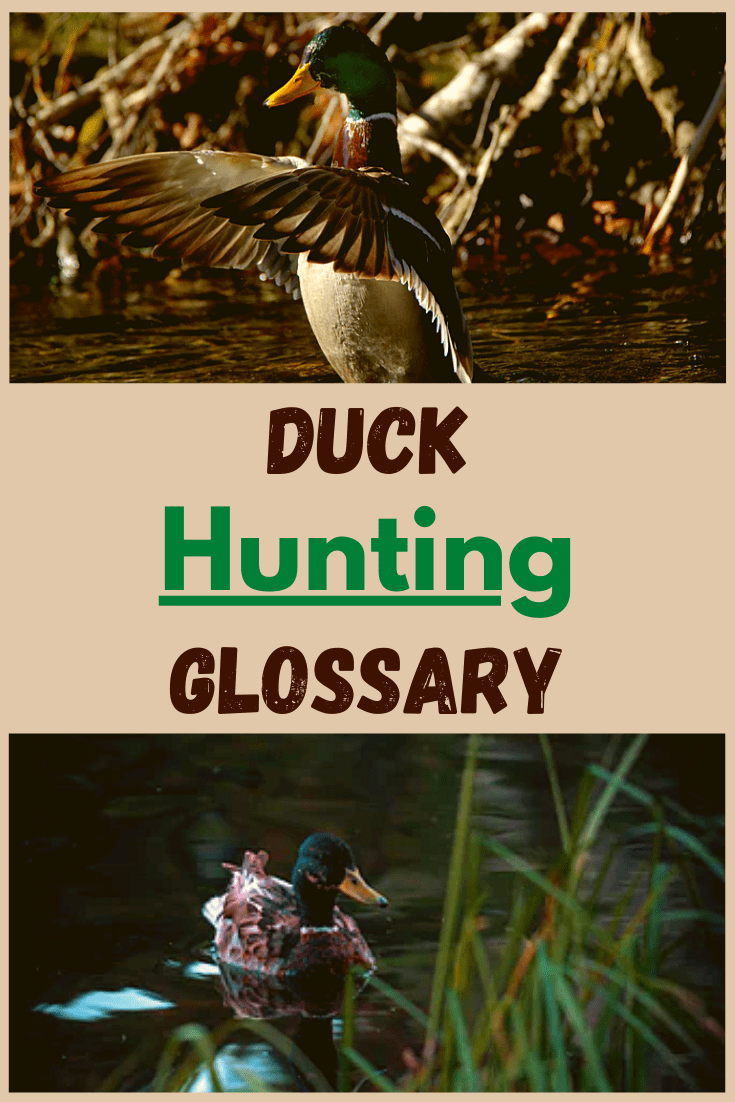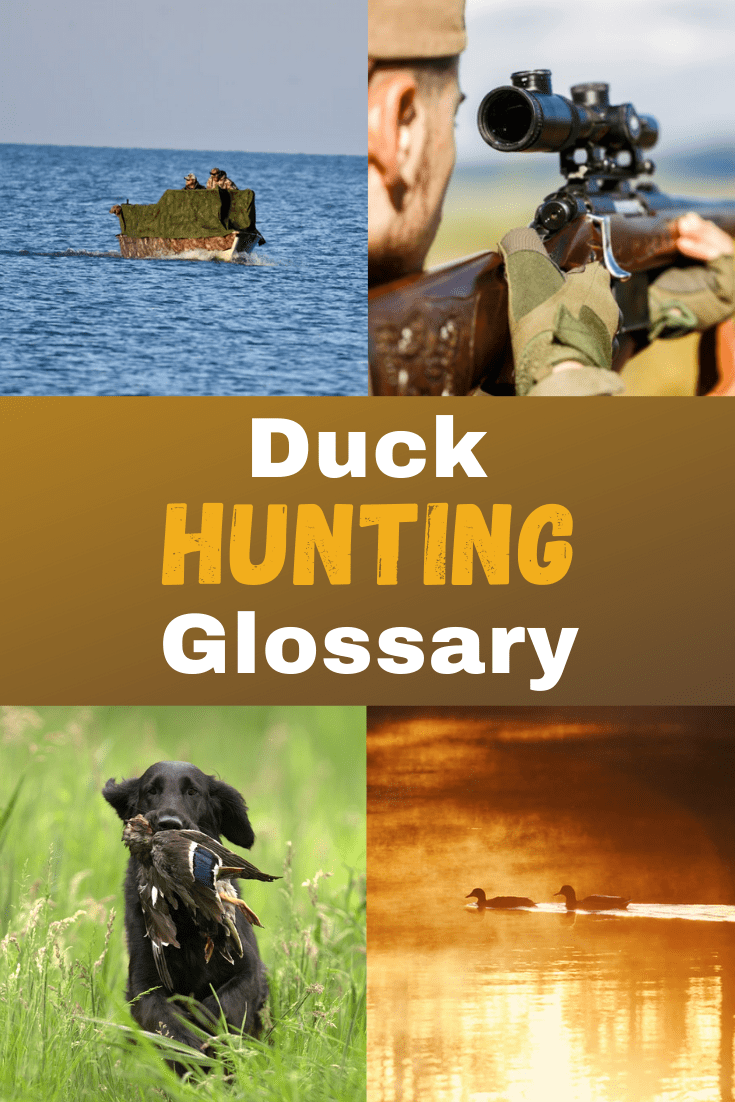Big Game Logic is reader-supported. When you buy through links on our site, we may earn an affiliate commission.
Band - A duck band is the equivalent of trophy antlers to a duck hunter. Duck bands are highly prized and some even have bounties. Hunters who call in bounty bands are usually rewarded monetarily. Biologists use duck band information to study ducks.
Breasting Out - A butchering technique often used by waterfowl hunters. The breasts contain the vast majority of the meat on a wild duck. To breast out a duck simply peel back the skin and cut the breasts away from the chest plate. A filet knife is the tool of choice.
Call - An instrument used to mimic the sound of waterfowl. Most are cylindrical in shape with the center hollowed out. Reeds are placed in the cavity. As air is pushed through the reeds, a quack sound is created.
Coffin Blind - Also called ground blinds. These blinds allow waterfowl hunters to hunt with a low profile in field situations without the digging pits.
Decoy - The tools of the trade for a duck hunter. Decoys were traditionally made of cork but most are now made of molded plastic. They are also made in a variety of subspecies but mallards are the most common. Several decoys set out to entice ducks is known as a decoy spread.
Divers - Short for diving ducks; Scaup, canvasbacks, redheads, and mergansers are diving ducks. These birds dive below the surface of the water to find food such as fish and mollusks.
Drake - Male ducks are known as drakes.
Feeder Chatter - When puddle ducks such as mallards are feeding they often make a rapid series of quacks. Duck hunters mimic this sound in an attempt to make approaching flocks believe their decoys are contented, feeding ducks. This sound is usually achieved by making the sound “ticka-ticka-ticka-ticka” into a call.
Flyway - A term for the section of the country a duck uses to travel from the breeding grounds in the northern portion of the continent to southern breeding grounds. There are
Fresh Birds - A term used to describe new arriving birds to a particular area. After a cold front comes through fresh birds usually arrive. These ducks are easier to hunt because they are unaware of where refuges and heavily hunted areas are.
Full Body Decoy - These decoys have feet instead of keels. They are most often used during field hunting situations but some hunters will put them on logs, islands, or sand bars while hunting water.
Hen - Female ducks are known as hens.
High Ball - The high ball call is also known as a hail call. It is a very loud multi-note call intended to get the attention of distant flocks. Once a flock begins to approach, it is best to switch to softer calling.
Greenhead - Name used to describe a drake mallard. Drake mallards are the most harvested duck in North America.
Jerk String - A jerk string is used to create motion within a flock. A string is connected to a few decoys within the spread. When ducks approach, a hunter pulls on the string creating motion within a decoy spread. This method was created well before the advent of the motion decoys of today.
Landing Zone - A landing zone is an open area within a decoy spread. This open area is intended to give ducks an area to land in. Veteran hunters plan the landing zone in a spot offering advantageous shots.
Limit - The maximum amount of ducks a hunter can legally harvest on any given day.
Locked Up - When a duck is about to land it stops beating it’s wings and locks them up while descending. The best time to shoot ducks are when they are locked up.
Migration - A duck’s trip to and from wintering and breeding grounds. Ducks fly south during the fall and north in the spring.
Motion Decoy - A decoy with moving parts intended to create realism within a decoy spread. They offer a wide variety of motion from kicking feet, moving heads, spinning wings, and much more.
Plucking - Harvested ducks bound for the roasting pan are plucked. Entrails are removed and all the feathers are pulled off the body while leaving the skin intact. Dunking the bird in boiling water makes the process of plucking easier.
Puddlers - Short for puddle duck. Puddle ducks are birds that typically eat only vegetation. Mallards, gadwalls, pintails, and wigeon. They are also known as dabbling ducks.
Refuge - A safe place for waterfowl where hunting is not allowed. Refuges offer migrating waterfowl a resting place on their journey.
Retriever - Name given to dogs used for hunting. Retrievers locate and collect downed ducks. The Labrador Retriever is the most commonly used retriever. However, Chesapeake Bay Retrievers, Golden Retrievers, and American Water Spaniels are among many other breeds waterfowl hunters enjoy.
Silhouettes - Two dimensional duck decoys. Silhouettes are less expensive than full body decoys. Hunters that demand large spreads use them to save money while making a big impact.
Skiff - A small boat used for hunting in marshes and other small bodies of water. Most skiffs are paddle powered.
Skybusting - A term used to describe the practice of shooting at out of range ducks. Skybusting is the mortal sin of the duck hunting world. Skybusters can wound birds. Those who are unharmed learn from the experience and are believed to be harder to hunt.
Spinning Wing Decoy - The most common type of motion decoy. They usually consist of a molded duck body on a stake with wings on either side. The wings spin giving the decoy the appearance of a duck landing in the spread.
Sprig - Term hunters use to describe a drake pintail. Also known as a bull sprig.
Water keel - A type of duck decoy that has a hollow keel below the body of the decoy. They are lightweight and inexpensive, but tend to rock unnaturally and can tip over in windy conditions.
Weighted keel - A weighted keel decoy has sand or lead in the keel of the decoy. This weight helps stabilize the decoy in windy weather and ensures the decoy lands head up when throwing decoys out during setup.
Wing Beat - The motion of a flying duck’s wings. The wing beat will significantly slow when a duck is planning to land. As the duck
WPA - Waterfowl Production Area; these are federally owned properties designed to give waterfowl areas to nest in the spring. They are open to hunting in the fall and can provide excellent wing shooting opportunities
Share to Pinterest



